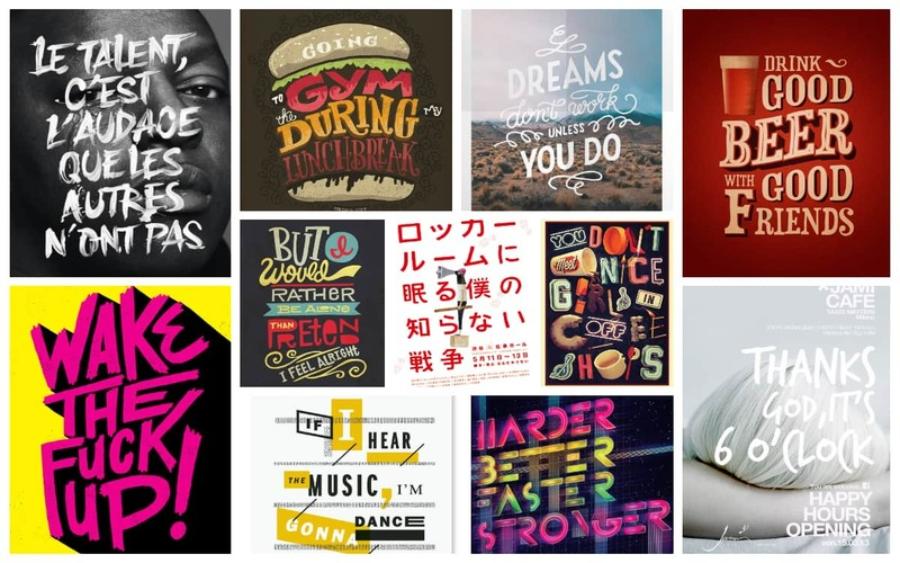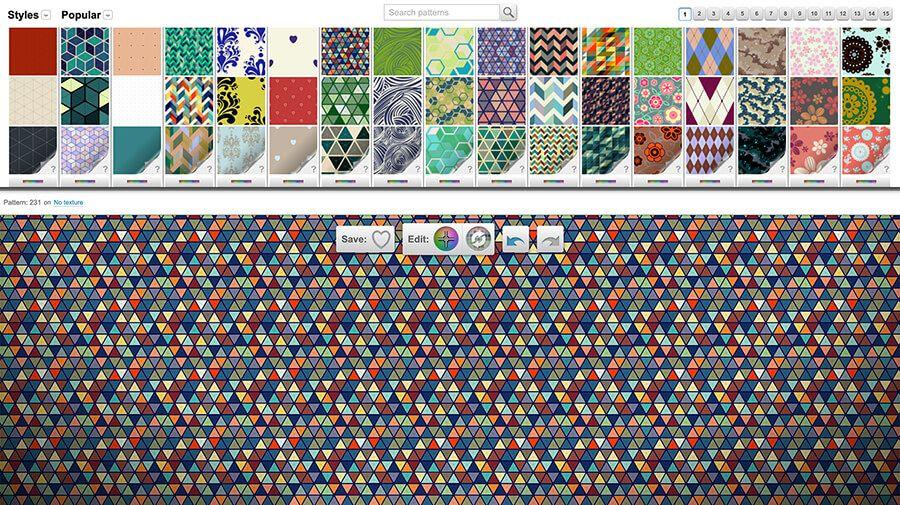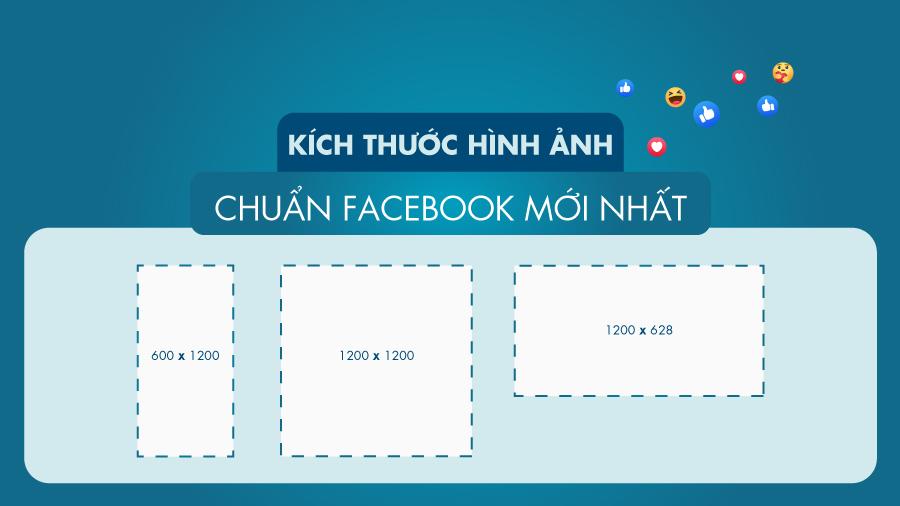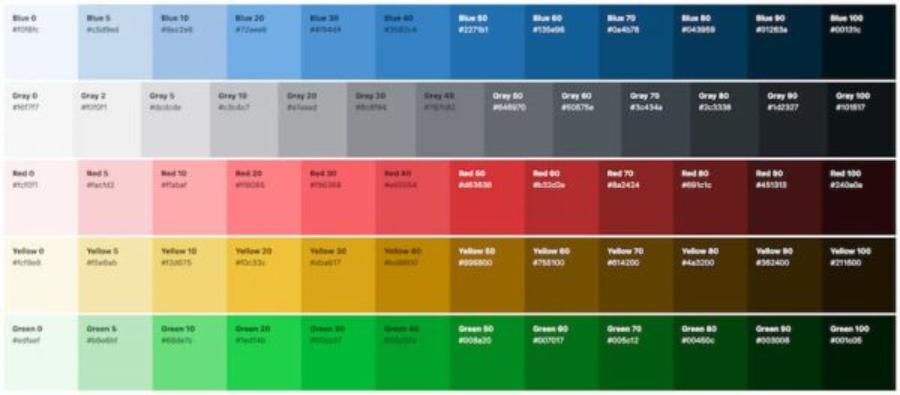Best Selling Products
Career development opportunities for today's Designers
Nội dung
- 1. The Strong Rise of 3D Graphics in Marketing
- 2. Outstanding 3D Graphic Design Trends in Marketing in 2025
- 3. Wide Open Opportunities For Digital Designers In The Field Of 3D Marketing
- 4. Necessary Skills to "Catch the Wave" of 3D Marketing Trends
- 5. What is the path for designers who want to switch to 3D Marketing?
- 6. Challenges When Working With 3D Graphics In Marketing
- 7. The Future of 3D Graphics in Marketing
- 8. Advice For Digital Designers
- 9. 3D Graphics Applications In Specific Industries
- 10. Measuring the Effectiveness of 3D Graphics in Marketing
- 11. Conclusion
Explore diverse and potential career development opportunities for Designers in the digital age, from professional skills to technology trends and creative markets.

The marketing world is witnessing a visual revolution, and 3D graphics are emerging as a mainstream trend, bringing more vivid and engaging visual experiences than ever before. From product advertising, branding to user interaction, 3D graphics are gradually replacing traditional methods, opening a new era of creativity and efficiency. So, what are the highlights of 3D graphic design trends in marketing in 2025? And what opportunities await Digital Designers in this potential "playground"? In this article, sadesign will delve into exploring the aspects of this trend, while analyzing the attractive opportunities for the design community.
1. The Strong Rise of 3D Graphics in Marketing
In recent years, 3D graphics have made great strides in technology and application. The development of software, hardware and supporting tools has made the creation of 3D images and videos easier and more efficient. This has paved the way for the strong rise of 3D graphics in the field of marketing:
(1).jpg)
Intuitive and Vivid: 3D graphics allow products and ideas to be displayed in a much more realistic and vivid way than traditional 2D images. Viewers can clearly visualize the shape, size, material and details of the product from many different angles.
Capable of telling compelling stories: With 3D graphics, marketers can create more visual and engaging stories that capture the attention and engagement of their audience. 3D animation videos, virtual tours or interactive 3D experiences provide unforgettable experiences.
Make a difference and stand out: In a sea of advertising information, unique and impressive 3D graphics help the brand stand out from the crowd, creating a strong impression in the minds of customers.
Enhanced user engagement: 3D interactive applications allow users to actively explore products, customize colors, configure, and experience features, thereby increasing product engagement and understanding.
Diverse applications across multiple platforms: 3D graphics can be integrated into many different marketing channels, from websites, social networks, online advertising to virtual reality (VR) and augmented reality (AR) experiences.
2. Outstanding 3D Graphic Design Trends in Marketing in 2025
The year 2025 is expected to witness a strong and diverse development of 3D graphic design trends in marketing:
Realism: Continues to be an important trend in displaying products in the most realistic way, especially in industries such as real estate, automobiles, furniture and high-end consumer goods.
Stylized 3D: Besides realism, stylized 3D styles with bright colors, unique shapes and impressive effects will be increasingly popular to create a difference and attract young audiences.
Interactive 3D Experiences: Applications that allow users to interact directly with 3D product models on websites or mobile apps will become more popular, providing a lifelike online shopping experience.
3D Animation and Motion Graphics: Short, eye-catching 3D animation videos and 3D motion graphics will continue to be widely used to explain products, convey brand messages, and attract attention on social media.
Integration with AR/VR: 3D graphics will be the core foundation for AR/VR marketing experiences, allowing users to interact with products in realistic or virtual environments.
Generative 3D Design: AI tools and algorithms will increasingly be used to generate 3D models and textures automatically or semi-automatically, accelerating the design process and opening up new creative possibilities.
Sustainable 3D Design: There will be an increasing focus on creating resource-efficient 3D models, minimizing file sizes, and optimizing for different platforms.
3. Wide Open Opportunities For Digital Designers In The Field Of 3D Marketing
The strong development of 3D graphics in marketing brings countless attractive opportunities for Digital Designers:
.jpg)
Rising demand for manpower: With the increase in 3D graphics applications, the demand for 3D design professionals with skills and experience in the marketing field will increase.
Attractive salary: Due to high expertise and large market demand, 3D graphic design positions in marketing often have competitive and attractive salaries.
Diverse job opportunities: 3D Designers can work at advertising agencies, marketing companies, design studios, businesses in many different industries or work freelance.
Unlimited Creativity: 3D graphics open up a vast creative space, allowing Designers to express unique ideas and create impressive visual experiences.
Access to cutting-edge technology: Working in the field of 3D marketing means having access to and mastering the most advanced 3D design tools and technologies.
Play an important role in marketing campaigns: 3D Designers are not only image creators but also play an important role in shaping brand messages and experiences through 3D content.
4. Necessary Skills to "Catch the Wave" of 3D Marketing Trends
To make the most of the opportunities in the field of 3D marketing, Digital Designers need to equip themselves with the following skills:
Proficiency in 3D software: Mastery of at least one specialized 3D software such as Blender, Cinema 4D, Autodesk Maya, 3ds Max. Blender is a powerful and increasingly popular open source option.
Modeling Skills: Ability to create accurate and aesthetically pleasing 3D models from 2D drawings or ideas.
Texturing Skills: Understanding how to create and apply realistic or stylized surface textures to 3D models.
Lighting Skills: The ability to set up appropriate lighting systems to highlight models and create the desired atmosphere.
Rendering Skills: Understanding of rendering engines and how to optimize the rendering process to create high quality 3D images and videos.
Animation Skills (3D animation): Ability to create smooth and attractive movements for 3D models.
Compositing Skills: The ability to combine 3D elements with 2D images, videos, and special effects.
Understanding of design principles: Master the basic principles of graphic design such as layout, color, typography to apply to 3D environment.
Marketing knowledge: Understanding of marketing strategies, consumer behavior and how to convey brand messages through images.
Teamwork and communication skills: Ability to coordinate effectively with other members of the marketing team (copywriter, art director, marketing manager...).
Ability to learn and update: The world of 3D technology is evolving very quickly, so it is important to constantly learn and update new trends.
5. What is the path for designers who want to switch to 3D Marketing?
For Digital Designers looking to explore opportunities in 3D marketing, there are many paths to get started:
Take online courses and tutorials: There are plenty of free and paid learning materials on platforms like Udemy, Coursera, Skillshare, YouTube about 3D software and skills.
Take workshops and intensive courses: Training centers and design studios often organize workshops and intensive courses on 3D graphics.
Practice personal projects: Create mock 3D marketing projects to hone your skills and build your portfolio.
Look for internships or assistantships: Start with internships or assistantships at marketing companies or 3D studios to gain real-world experience.
Build an impressive portfolio: Focus on showcasing potential 3D marketing projects in your portfolio.
Networking: Attend industry events, connect with 3D marketing professionals on LinkedIn and other social networks.
6. Challenges When Working With 3D Graphics In Marketing
Besides the opportunities, Digital Designers also need to be aware of the challenges when working with 3D graphics in the marketing field:
.jpg)
Highly specialized skills required: 3D graphics requires in-depth knowledge and skills in software, workflows, and 3D design principles.
Project lead times can be long: Creating high-quality 3D models, animations, and experiences is often more time-consuming and labor-intensive than 2D design.
Powerful hardware requirements: 3D software often requires high-end computers to ensure smooth performance and reasonable rendering times.
Software and resource investment costs: Professional 3D software often has a high licensing cost, along with the cost of high-quality 3D resources (models, textures...).
Competition in the industry: Although the demand for human resources is increasing, the number of Designers with specialized 3D skills is also increasing, creating a certain competition in the labor market.
Rapid change in technology: 3D technology is constantly evolving, requiring Designers to constantly learn and update the latest tools and techniques.
Ability to effectively convey marketing messages in 3D: Not every product or marketing message is suited to the 3D format. Designers need to be able to evaluate and advise on the effective use of 3D.
7. The Future of 3D Graphics in Marketing
Looking to the future, 3D graphics promise to continue to play an increasingly important role in the marketing field:
The Popularity of the Metaverse: With the growth of the Metaverse, the demand for 3D content and experiences will grow rapidly, opening up unprecedented creative opportunities for 3D Designers in marketing.
AI and automation: AI and automation tools will increasingly be integrated into the 3D design workflow, making it easier to speed up workflows and create complex 3D content.
Real-time 3D: Real-time 3D technology (real-time rendering) will be increasingly widely applied in marketing, especially in online interactive experiences and AR/VR.
Personalized 3D Experiences: Personalized 3D content based on individual user preferences and behaviors could become an important trend in the future.
The combination of 3D and other technologies: 3D graphics will be increasingly integrated with other technologies such as AI, AR/VR, blockchain to create unique and groundbreaking marketing experiences.
8. Advice For Digital Designers
To succeed in the potential field of 3D marketing graphics, Digital Designers should:
Invest in learning and improving your 3D skills: Continuously improve your knowledge and skills in the latest 3D software, techniques and trends.
Build an impressive 3D marketing portfolio: Focus on showcasing 3D projects that are relevant to marketing and demonstrate your ability to solve real-world problems.
Soft skills development: Practice communication skills, teamwork, critical thinking and adaptability.
Networking: Connect with industry professionals, join 3D and marketing communities.
Stay up to date with marketing trends: Understand current marketing strategies and how 3D graphics can contribute to their success.
Find real-world opportunities: Take on freelance projects or look for internships to gain real-world work experience in 3D marketing.
Never stop creating and experimenting: Dare to try new ideas and explore the unique possibilities of 3D graphics in marketing.
9. 3D Graphics Applications In Specific Industries
To better visualize the potential of 3D graphics in marketing, consider some specific applications in different industries:
.jpg)
Real Estate: Instead of static 2D images, 3D graphics allow for the creation of vivid virtual tours, allowing customers to explore every corner of a model home or project remotely. Realistic 3D renderings of exteriors and interiors help customers visualize their future living space.
Automotive: 3D graphics allow users to interact with online car models, customize colors, interiors, and explore detailed features from every angle. 3D animation videos can demonstrate technology and safety features visually.
Furniture: Customers can use AR applications combined with 3D models to preview furniture in their homes, helping them make more confident purchasing decisions. High-quality 3D renderings help manufacturers showcase products attractively on websites and catalogs.
Fashion: 3D graphics are opening up new possibilities for fashion presentation, from virtual runway shows to allowing customers to virtually “try on” clothes through AR. 3D models of accessories and jewelry can be displayed in a detailed and engaging way.
Consumer Goods: 3D graphics help create eye-catching product images for online and print advertising, highlighting features and benefits. 3D animated videos can explain how to use a product in an easy-to-understand way.
10. Measuring the Effectiveness of 3D Graphics in Marketing
To demonstrate the value of 3D graphics in marketing campaigns, measuring effectiveness is essential. Some metrics that can be tracked include:
Engagement Rate: Compare the rate of likes, comments, and shares on posts using 3D images/videos compared to traditional 2D content.
Time Spent: Track how long users spend interacting with interactive 3D experiences or watching animated 3D videos.
Conversion Rate: Measure how 3D content influences purchases, signups, or other target actions.
Website Traffic: Analyze whether 3D content helps increase traffic to your website or landing pages.
Brand Awareness: Evaluate whether unique 3D graphics increase brand recognition and recall.
Customer Feedback: Collect customer feedback on their experience with 3D content through surveys or other interactive channels.
Tracking and analyzing these metrics will help marketers and designers evaluate the effectiveness of 3D graphics applications and optimize future campaigns.
11. Conclusion
The trend of 3D graphic design in marketing is opening up a new horizon of promising opportunities for Digital Designers. With the ability to create vivid, interactive and impressive visual experiences, 3D graphics are becoming an indispensable tool in the marketing strategies of many businesses. Equipping the necessary skills and grasping new trends will help Designers "catch the wave" of success and affirm their position in this potential field. Prepare your luggage now to take advantage of the attractive opportunities that the world of 3D marketing brings!












































